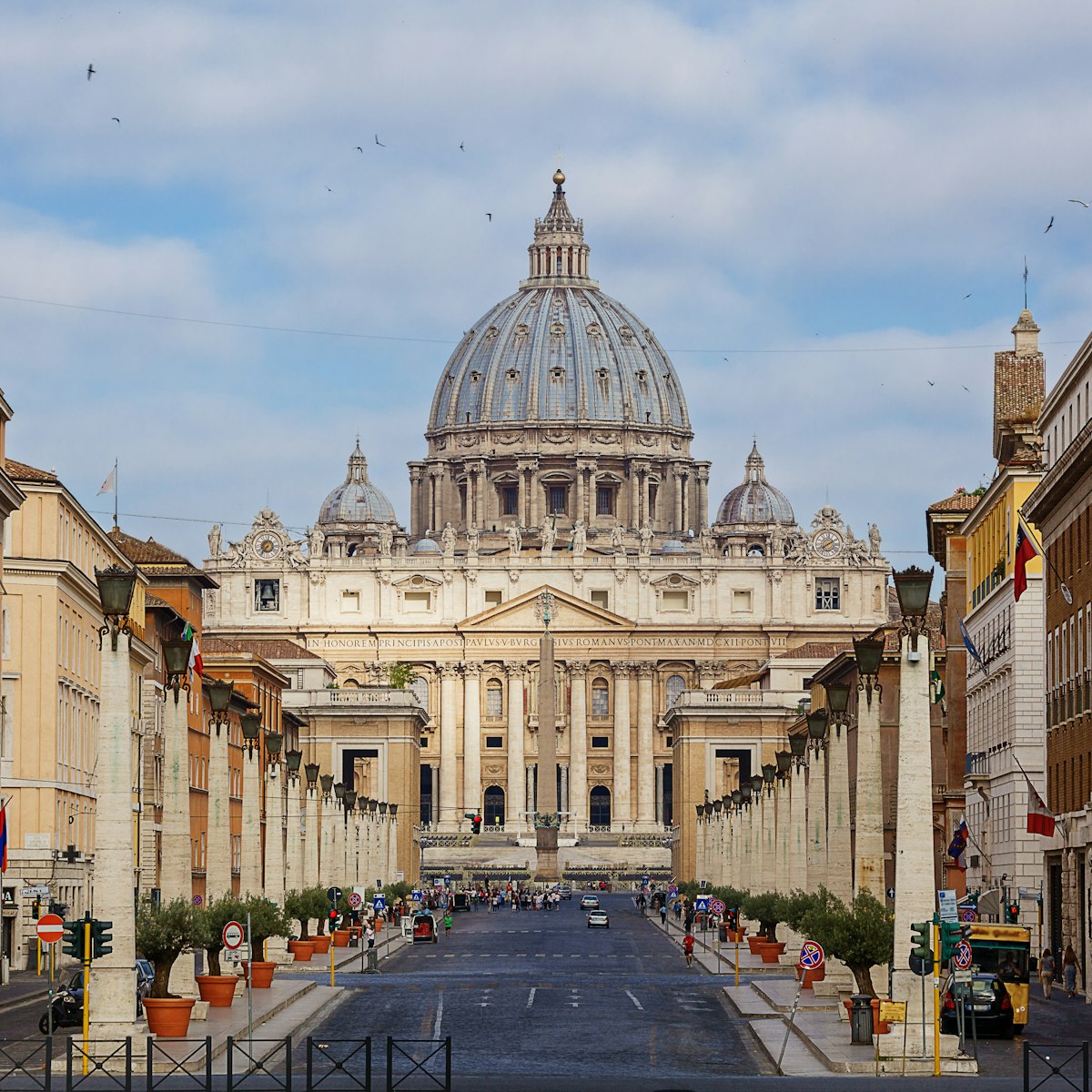An imposing example of Counter-Reformation architecture, Rome's most important Jesuit church is a fabulous treasure trove of baroque art. Headline works include a swirling vault fresco by Giovanni Battista Gaulli (aka Il Baciccia) and Andrea del Pozzo’s opulent tomb for Ignatius Loyola, the Spanish soldier and saint who founded the Jesuits in 1540. St Ignatius lived in the church from 1544 until his death in 1556 and you can visit his private rooms to the right of the man church.
The church, which was consecrated in 1584, is fronted by an impressive and much-copied facade by Giacomo della Porta. But more than the masonry, the real draw here is the church's lavish interior. The cupola frescoes and stucco decoration were designed by Il Baciccia, who also painted the hypnotic ceiling fresco, the Trionfo del Nome di Gesù (Triumph of the Name of Jesus).
In the northern transept, the Cappella di Sant’Ignazio houses the tomb of Ignatius Loyola. The altar-tomb, designed by baroque maestro Andrea Pozzo, is a sumptuous marble-and-bronze affair with lapis-lazuli-encrusted columns, and, on top, a lapis-lazuli globe representing the Trinity. On either side are sculptures whose titles neatly encapsulate the Jesuit ethos: to the left, Fede che vince l'Idolatria (Faith Defeats Idolatry); and on the right, Religione che flagella l'Eresia (Religion Lashing Heresy).
A further statue is hidden in a niche behind the main altar painting. This is revealed at 5.30pm each day when the so-called 'baroque machine' is activated and the painting slides down to expose a statue of St Ignatius.







